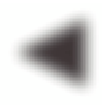Java Reference
In-Depth Information
hoops you have to jump through to access a remote service.
OSG
i minimizes this prob-
lem by leveraging existing
OSG
i service mechanisms. In normal
OSG
i, bundles com-
municate via the
OSG
i Service Registry, which shields service clients from service
providers. It turns out that not only is this a good thing for modularity within the local
system, but that it provides excellent modularity for remote services as well!
The Remote Services Specification defines a mechanism by which a service can be
exported from the Service Registry in one
OSG
i framework, making it appear in
another
OSG
i framework. As far as the client is concerned, it can then consume both
local and remote services in exactly the same way. From the provider's perspective,
things are equally simple; they register a service into their local Service Registry, and
then wait for incoming requests. These requests may be from local bundles, or from
remote ones; the provider doesn't need to know or care.
To achieve this model, the Remote Services Specification defines two different
roles for the remoting implementation, which is usually known as the
distribution
provider
.
10.2.1
Exposing endpoints
When a local
OSG
i service is made available for remoting, it needs to be exposed as an
endpoint. This endpoint could be anything from a web service to a proprietary bit-
stream format; the important thing is that the endpoint is accessible from outside the
framework. This part of the process is relatively simple, and it's correspondingly easy to
indicate to a distribution provider that a service should be made remotely accessible. To
do this, you make use of the whiteboard pattern. Rather than looking up a remoting
provider and providing it with a remotable object, you register that remotable object as
a normal
OSG
i service. To indicate that your service should be made available remotely,
you add the
service.exported.interfaces
property to your service. The value of this
property defines the interface names that should be exposed remotely. This is a good
example of section 5.2.4 in action (see figure 10.6).
Framework
Distribution
provider
Remote
endpoint
Bundle A
service.exported.interfaces=*
Figure 10.6
A distribution provider uses the whiteboard pattern to locate remotable services and expose
them outside the OSGi framework.












